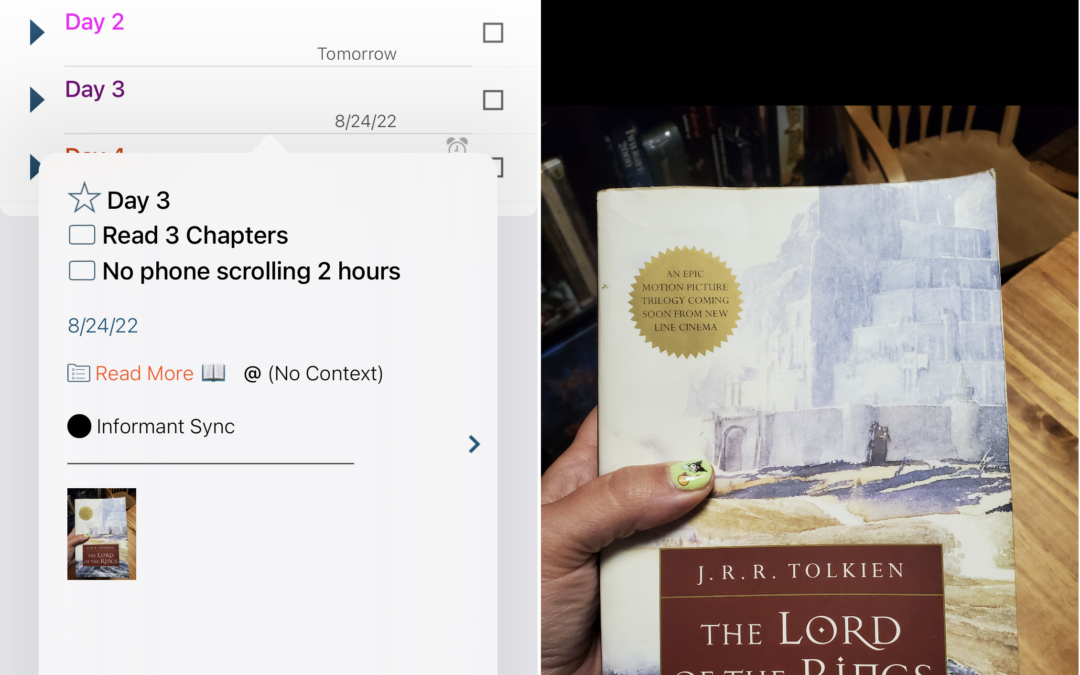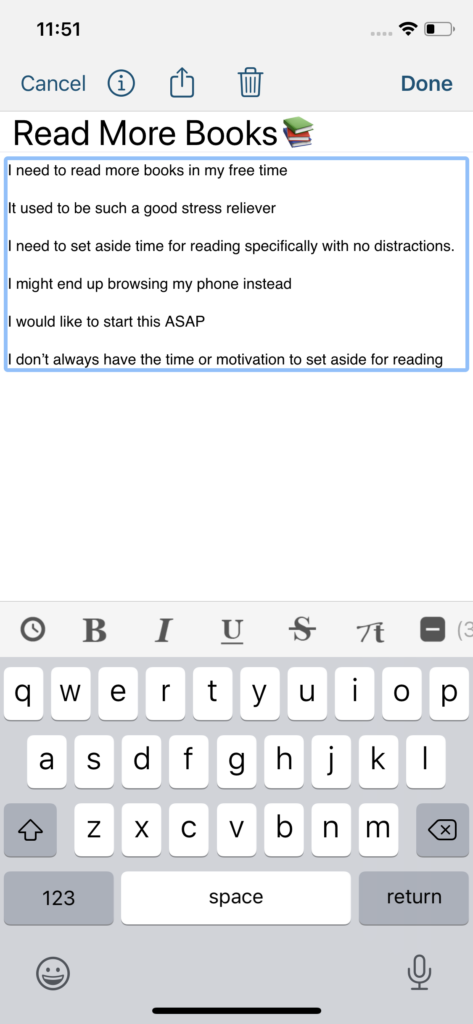How to set and achieve SMART goals.
Clarity is vital for the achievement of SMART goals. Your dream or goal must be specific and clear and should not be vague. As you build this SMART goal foundation, remember the following:
- Clarity is paramount.
- Vague is the enemy of productivity.
- Ambiguous is the enemy of achievement.
- Lack of clarity is the enemy of success.
Your brain is capable of finding solutions if the objective is obvious. Staying on track is easy if the result is clear to you. Having a specific endpoint in mind will prevent you from ending up anywhere. Using Informant can help you keep track of these goals.
Okay, let’s get started!
Start by writing down your dream, wish, or goal. Don’t worry about wording it exactly right, that’s where SMART will help. Just get it down on paper.
Write down your initial goals statement:
My goal, as I see it right now, is…
We’ll now run your goal through the SMART process to refine and clarify your goal.
S is for Specific
Your goal needs to be spelled out very precisely and you also need to have a reason WHY behind your goal—some benefit or emotional attachment that will keep you focused. Use language that leaves no doubt as to:
- What the goal is.
- Why you want to achieve the goal.
- How you will get there.
If you are not able to be detailed in your description of the goal, it will be hard to meet it. State exactly what you want to accomplish.
Write the answers to the following:
- What goal do you want to accomplish?
- Why is that goal important to you?
- What do you need in order to accomplish the goal?
- What obstacles might you face while achieving this goal?
- Who needs to be included?
- When do you want to do this?
- Which resources or limits are involved?
M is for Measurable
It’s important to have measurable goals so that you can track your progress and stay motivated. Assessing progress helps you to stay focused, meet your deadlines, and feel the excitement of getting closer to achieving your goal. Without measures, how will you know that you’ve been successful?
What metrics are you going to use to determine if you meet the goal? This makes a goal more tangible because it provides a way to measure progress. If it’s a project that’s going to take a few months to complete, then set some milestones by considering specific tasks to accomplish. Milestones are a series of steps along the way that when added up will result in the completion of your main goal.
- If your goal had a scoreboard, how would you know if you are winning or losing today? This week? This month?
- What units of measurement will you use? (Examples: Hours/days/weeks? Pounds? Calories? Reps?
- How will you know if you’ve reached your daily goal? Weekly goal? Halfway point?
- How will know if you’ve successfully achieved your goal?
- A measurable goal should address questions such as:
- How much?
- How many?
What will you see, hear, or feel when you have achieved your goal?

By using Informant’s Project capabilities, I can hold myself accountable for the daily Goals I’ve set for myself.
A is for Achievable
It must be possible for you to achieve your goal. Setting unachievable, unattainable goals is futile.
Your goal also needs to be realistic and attainable to be successful. In other words, it should stretch your abilities but still remain possible. When you set an achievable goal, you may be able to identify previously overlooked opportunities or resources that can bring you closer to it.
Avoid setting goals that someone else has power over. For example, “Get that promotion!” depends on other people to make the decision. But “Get the experience and training that I need to be considered for that promotion” is entirely up to you.
An achievable goal will usually answer questions such as:
- Is there something you will do each day that will eventually result in an accomplished goal?
- How can I accomplish this goal?
- How realistic is the goal, based on other constraints, such as financial factors?
- Is it possible for me to achieve this goal?
- Am I in control of achieving this goal?
- Is your goal motivating or over whelming?
- Is your goal achievable in the period provided?
- Do you have the skills required to achieve your goal? If not, can you obtain them?
___ Yes, as long as I work on it daily, I should have no trouble achieving my goal.
___ No. After careful consideration, I need to rework the goal so that it is achievable. - Can the required tasks be completed in the timeframe?
___ Yes, as long as I work on it daily I should have no trouble completing the goal within the timeframe.
___ No. I think I need to break it down into more achievable steps.
R is for Relevant
This step is about ensuring that your goal matters to you, and that it also aligns with other relevant goals. We all need support and assistance in achieving our goals, but it’s important to retain control over them. So, make sure that your plans drive everyone forward, but that you’re still responsible for achieving your own goal.
There’s no point in making or achieving goals that have no relevance to your long-term life goals. You could instead use that time to reach goals that get you one step closer to actually reaching your life goals. So always ask yourself, if the goal is relevant to your life goals.
Can you answer “yes” to the following:
- Does this seem worthwhile?
- Is this the right time?
- Does this match our other efforts/needs?
- Am I the right person to reach this goal?
- Is it applicable in the current socio-economic environment?
- Is my goal aligned with my values and who I’m striving to become?
Write “why” you answered each question the way that you did.
T is for Time-Bound
Every goal needs a target date, so that you have a deadline to focus on and something to work toward. This part of the SMART goal criteria helps to prevent everyday tasks from taking priority over your longer-term goals.
Providing a target date for deliverables is imperative. Ask specific questions about the goal deadline and what can be accomplished within that time period. If the goal will take three months to complete, it’s useful to define what should be achieved half-way through the process. Providing time constraints also creates a sense of urgency.
A time-bound goal will usually answer these questions:
- When?
- How far along will I be six months from now?
- How far along will I be six weeks from now?
- What can I do today?
- Is the goal so clear that you can create an action plan?


